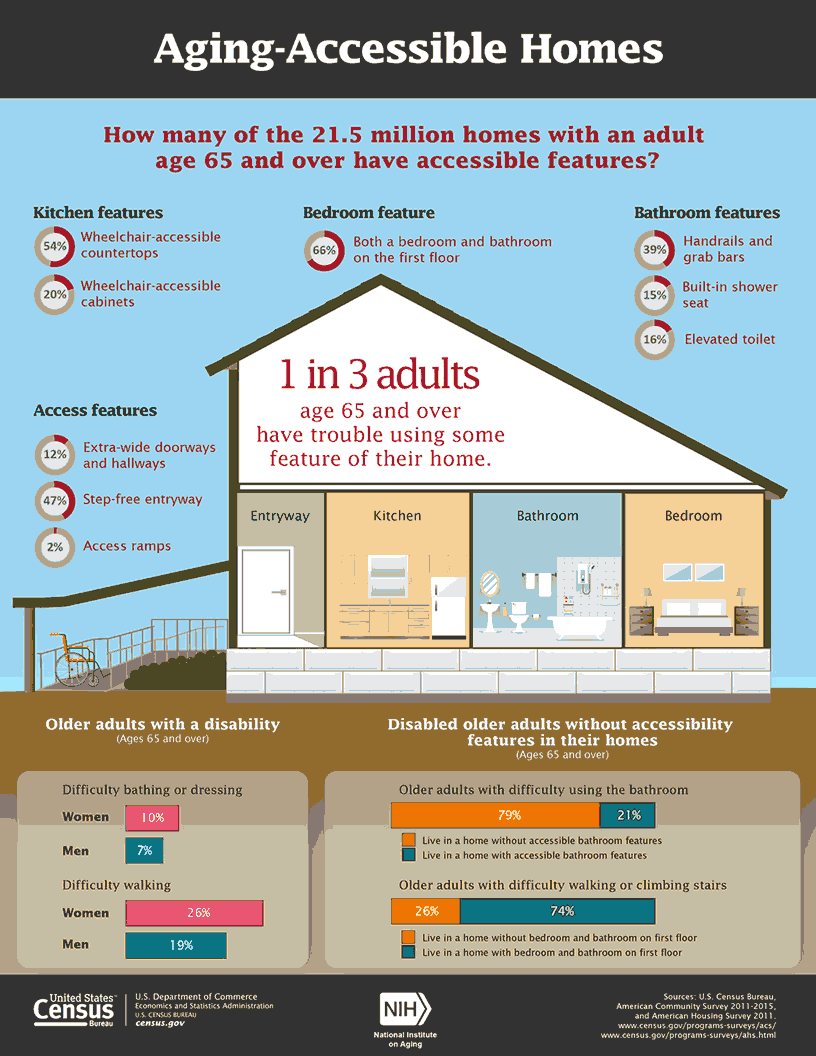Although daily life can be far more challenging for people with disabilities, the delivery of new technology into the marketplace has made it easier for individuals around the world to achieve a higher level of independence, regardless of physical or mental restrictions. These opportunities to live independently can help those with disabilities to fight back against depression, improving their wellbeing and even increasing their lifespan in some cases.
Of course, for an individual to continue living at home with the help of new technology, it will be crucial to make extensive modifications to real estate property. While some of these updates can be un-intrusive, such as the addition of camera systems, some will require significant renovations, which could have an overall impact on the value of a home.
The Cost of Disabled-Friendly Renovations
There are multiple ways in which modifying a home for disabled access can become an expensive process. For instance, there are the costs of the modifications themselves to consider – which can be somewhat significant depending on the technology you want to access. On the other hand, there are also costs to consider when it comes to considering the impact certain changes might have on your ability to sell a home in the future.
The good news is that there are plenty of cost-effective resources out there that can help you to make life easier for a disabled resident, without necessarily ruining the value of your home. For those thinking about making modifications, the key will be in finding the correct balance when making a property appealing to both able-bodied, and disabled individuals.
For instance, some of the installations that won’t damage the overall value of your home might include:
- Deciding to lower stair railings and the heights of doorknobs,
- Adding additional exterior lighting
- Purchasing adjustable tables for the elderly
- Installing lower storage areas in bathrooms and kitchens.
- Installing grab-rails and non-slip flooring in bathrooms.
- Installing modified lock systems to help those with problems using their hands
- Installing elevators, or chair lifts on stairs.
- Adding security cameras and smart devices
Maintaining a Home’s Value When Modifying for the Disabled
The truth is that most homeowners don’t think too deeply about the future value of their home when they’re making modifications to suit disabilities and physical concerns. After all, the key to making the most out of your home is ensuring that you have the tools and resources in place to keep you and your family safe and comfortable – regardless of the effect that those changes might have on your future selling opportunities.
However, if you are concerned about maintaining the value of your property, and ensuring that you’ll have the potential to make a profit in the future property market, then it may be worth thinking carefully about the changes you make to preserve home value. While some major renovations may be necessary for certain circumstances, one of the best things you can do is ensure that you only make permanent changes to your home’s basic functioning when it is necessary. If you’re careful to make sure that your home remains to be accessible and comfortable to anyone who might access it, then you shouldn’t risk the value of your property.
At the same time, remember the importance of using professional services when it comes to having any new items installed or removed from your home. Even if you believe that a renovation looks simple enough for you to handle yourself, you could risk the overall value of your home by making even a small mistake. What’s more, you could also damage the safety of the person you’re trying to care for too. Sticking with a professional now could save you a lot of heartache at a later stage.
